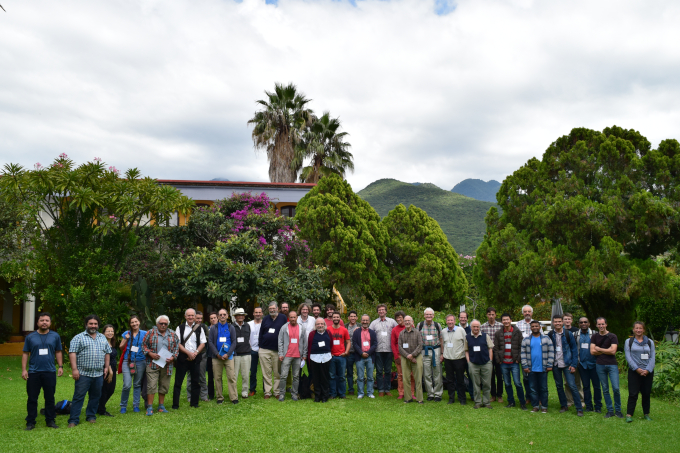Lipschitz Geometry of Singularities (18w5011)
Organizers
Anne Pichon (Aix Marseille University)
Walter Neumann (Columbia University)
Jawad Snoussi (UNAM)
Description
The Casa Matemática Oaxaca (CMO) will host the "Lipschitz Geometry of Singularities" workshop from October 21st to October 26th, 2018.
"Singularities'' are points in a geometric region which are different from most nearby points in the region. They are points of particular interest, arising in many areas of science such as biology, chemistry, physics and social science. They also lead to applications in technological domains, for example in robotics, control theory, optic, medical imaging, etc. Their study uses many mathematical tools. One of these tools is what is called ``bi-Lipschitz geometry'', which permits alteration of a geometric object by applying limited local stretching and shrinking. For example, a bi-Lipschitz change to the geometry of a knife preserves the sharpness of the knife, but may turn a dinner knife into a butter knife.
Applying bi-Lipschitz geometry to singularities retains their basic structure while making them much easier to classify and therefore easier to work with. Despite this, it is only fairly recently that bi-Lipschitz geometry has been applied much in singularity theory, but its use has grown rapidly in the last decade as an increasing number of researchers are starting to work with it. It is a powerful tool for a variety of mathematical problems.
The Casa Matemática Oaxaca (CMO) in Mexico, and the Banff International Research Station for Mathematical Innovation and Discovery (BIRS) in Banff, are collaborative Canada-US-Mexico ventures that provide an environment for creative interaction as well as the exchange of ideas, knowledge, and methods within the Mathematical Sciences, with related disciplines and with industry. The research station in Banff is supported by Canada's Natural Science and Engineering Research Council (NSERC), the U.S. National Science Foundation (NSF), Alberta's Advanced Education and Technology, and Mexico's Consejo Nacional de Ciencia y Tecnología (CONACYT). The research station in Oaxaca is funded by CONACYT.






